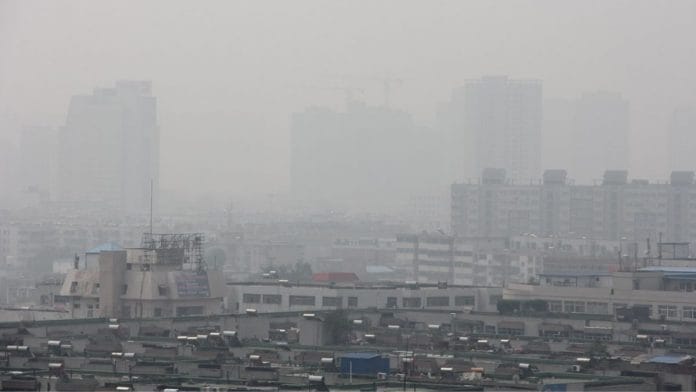The 2008 Beijing Olympics marked the start of significant action by the Chinese government to improve air quality. Concerns were raised over the impact of air pollution on athlete performance, and a wave of restrictions on polluting activities were implemented while the city sat in the global spotlight. Before the Games, 300,000 high polluting vehicles were phased out, major construction activities were halted, and hundreds of factories and power plants were shut down.
This brought about an extraordinary change. Air quality during the Games improved by about 30% compared to the previous year. Even this short-term improvement led to significant health benefits, with cities in and around Beijing placed under these restrictions seeing a drop in the number of deaths due to cardio and respiratory diseases.
Although these measures were short lived – air quality soon deteriorated once restrictions were relaxed following the Games – it showed what was possible with concerted action.
Five years later, the Chinese government declared its “war on pollution” with the launch of a national action plan. This introduced a raft of new measures including better regulation of polluting activities, factories relocating from populated areas, and government providing subsidies to farmers to discourage agricultural burning.
These measures have made a lasting impact. Air quality improved by 35% in the highly polluted northern Chinese cities between 2013 and 2017. This represented significant progress, but China still has a considerable problem with its air quality today. The annual average concentration of fine particulate matter (PM2.5) across China was 57 micrograms per metre cubed in 2017, nearly six times what the World Health Organisation deems to be acceptable limits. Poor outdoor air quality results in over 1 million deaths across China each year.
Further improvements will be increasingly challenging as the easiest actions have already been picked off. Targeting future regulations effectively requires robust data about the sources of air pollution, backed up by strong enforcement to ensure any new regulations are adhered to.
To this end, the Chinese government has improved its coverage of air quality monitors considerably. The number of federal monitoring stations across China nearly tripled between 2012 and 2020, from 661 to 1,800. This is in addition to thousands of monitoring stations managed and funded via local government. The problem now is not availability of data, but knowing how best to use it.
To help unlock the full potential of this data, a pilot project has been launched in Cangzhou City, a city of more than 7 million people in the polluted Beijing-Tianjin-Hebei region. Led by the Environmental Defense Fund (EDF) in partnership with the Beijing Huanding Environmental Big Data Institute and municipal government, the pilot combines multiple sources of air quality data to help the city’s regulators to enforce air quality regulations.
Prior to the project launching last year, city enforcement officers would undertake random spot checks of the city’s construction, industry and commercial sites to ensure adherence to air quality regulations, much like food safety officers might visit a restaurant to check its cleanliness. This was inefficient, with only 6-7% of site visits leading to an infringement being detected.
Today, the team has built a new data platform that ingests real-time data to map air quality across this city. It “fills in the gaps” between fixed government monitoring stations using mobile instruments fitted to 50 taxis, which cover an average of 5,000km between them every day. Each instrument takes a measurement every 3 seconds, resulting in a vast volume of data and hyperlocal real-time view of air quality across the city.
Crunching all this data together, the platform then automatically detects pollution hotspots and pushes this information to enforcement officers through a simple app.
The results have been striking. Within three months of the new platform being launched, emission sources were detected by enforcement officers on 70% of visits to hotspots – 10 times more than the previous randomised approach. Over 400 hotspots are now being reported each month to inspectors, and this is likely to improve further as the system continues to be tested.
This clearly demonstrates the viability and cost-effectiveness of hyperlocal air quality monitoring and its potential to support targeted air quality enforcement. The system is designed to be replicable, and can help other cities in China and around the world to tackle the lack of capabilities to enforce air quality regulations.
It also shows the value of investing in air quality monitoring technology, which remarkably half of the world’s national governments fail to do at all. With more than 90% of the world’s population breathing unsafe air, and 4.2 million premature deaths each year as a result, governments must urgently wake up to the air pollution problem and invest in the technology that can help them to tackle the problem.
Whilst the measures introduced by Beijing for the Olympics were temporary, they paved the ways for the Chinese government’s subsequent actions and have shown how air quality can improve once polluting activities are curtailed. Advances in data analytics can inform governments on where to focus action, and help regulators to enforce policy. The rewards of cleaning up our air are worth it: resulting in near immediate improvements in local health, and directly reducing the polluting activities that contribute to the climate crisis.
Hu Qin is Senior Director of Research at the Beijing Representative Office, Environmental Defense Fund, and Matt Whitney is Portfolio Manager at Clean Air Fund.
This article was originally published in the World Economic Forum.
Also read: 22 of world’s 30 most polluted cities in India, Delhi tops capitals list, says report






